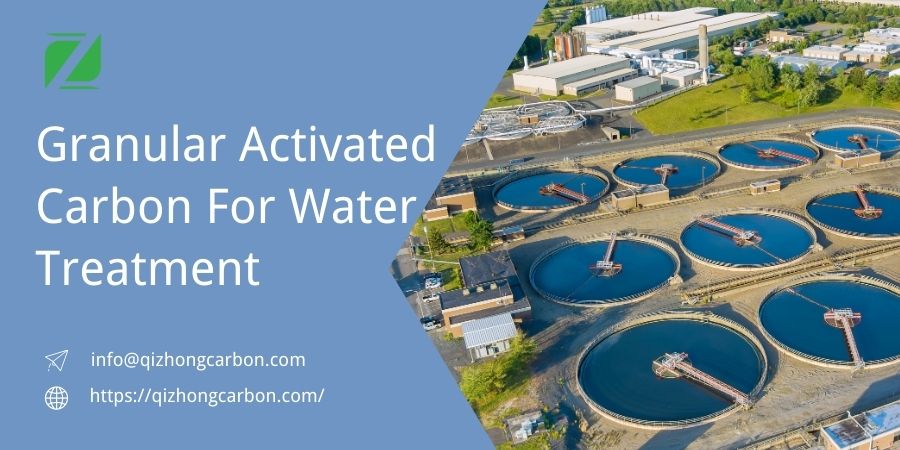Wasser ist die Quelle des Lebens, und die Gewährleistung seiner Reinheit ist entscheidend. Ob es sich um kommunales Trinkwasser aus Oberflächen- oder Grundwasser, um Industrieabwasser oder um Wasser für Freizeiteinrichtungen wie Schwimmbäder handelt, das Vorhandensein von Verunreinigungen stellt ein erhebliches Risiko für die menschliche Gesundheit und die Umwelt dar. Granulierte Aktivkohle (GAC) ist eine der wirksamsten und anerkanntesten Lösungen zur Bewältigung dieser Herausforderungen.
In diesem Artikel werden wir die Rolle der Aktivkohle bei der Wasseraufbereitung, ihre Funktionsprinzipien und Anwendungen in verschiedenen Branchen untersuchen. Außerdem können wir einen Leitfaden für die Auswahl der richtigen granulierten Aktivkohle für verschiedene Wasseraufbereitungsanforderungen bereitstellen.
Wie körnige Aktivkohle in der Wasseraufbereitung funktioniert
Granulierte Aktivkohle ist ein speziell verarbeitetes Kohlenstoffmaterial mit einer extrem hohen Porosität und inneren Oberfläche. Diese einzigartige Struktur ermöglicht es GAC, eine Vielzahl von organischen und anorganischen Verunreinigungen im Wasser effektiv zu adsorbieren.
Hauptfunktionen von GAC in der Wasseraufbereitung:
- Adsorption: Granulierte Aktivkohle adsorbiert effizient hydrophobe und hochmolekulare organische Verbindungen und bindet sie an der Oberfläche der Kohle.
- Chemische Reduktion: GAC schafft eine chemische Reduktionsumgebung, die schädliche Oxidationsmittel wie Chlor und Chloramine wirksam entfernt.
- Katalytische Reaktionen: Katalytische GAC kann chemische Reaktionen beschleunigen, z. B. den Abbau von Chloraminen im Trinkwasser.
Aufgrund ihrer Langlebigkeit, hohen Adsorptionskapazität und Erneuerbarkeit ist granulierte Aktivkohle die ideale Wahl für kontinuierliche Wasseraufbereitungsprozesse.
Anwendungen von körniger Aktivkohle in der Wasseraufbereitung
Granulierte Aktivkohle hat sich aufgrund ihrer starken Adsorptionsfähigkeit zu einem der wichtigsten Materialien im Bereich der Wasseraufbereitung entwickelt. Die wichtigsten Anwendungsbereiche sind folgende Wasseraufbereitung:
Kommunale Trinkwasseraufbereitung
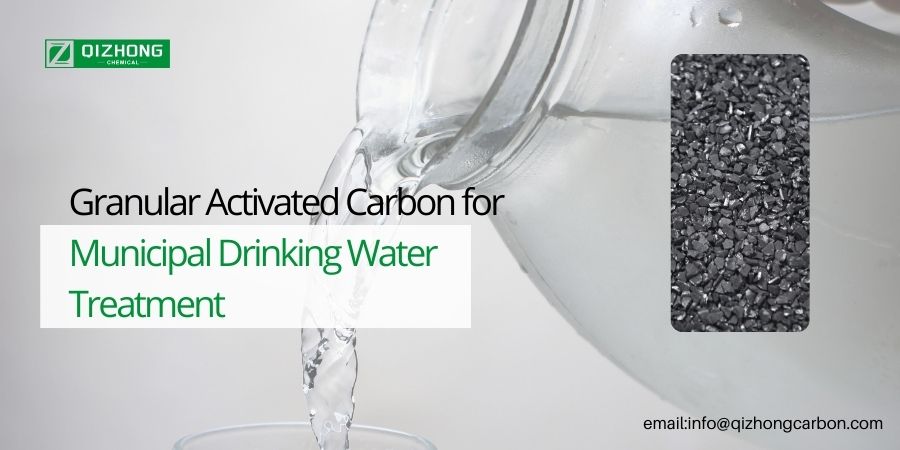
Kommunale Wasseraufbereitungsanlagen verwenden GAC zur Aufbereitung von Oberflächen- und Grundwasser, um sicheres Trinkwasser zu gewinnen. GAC entfernt wirksam schädliche Verunreinigungen und verbessert den Geschmack und Geruch des Wassers.
GAC entfernt effektiv die folgenden Verunreinigungen:
- Desinfektionsnebenprodukte (DBPs): Zum Beispiel Trihalomethane (THM) und Bromat.
- Natürliche organische Materie (NOM): Wie Geosmin und 2-MIB, die Geschmacks- und Geruchsprobleme verursachen.
- Persistente organische Schadstoffe (POPs): Darunter Dioxine, polychlorierte Biphenyle (PCB) und Pestizide.
- Per- und Polyfluoralkylsubstanzen (PFAS): Zum Beispiel PFOA und PFOS.
- Spurenkontaminanten: Zum Beispiel endokrin wirksame Verbindungen und Arzneimittelrückstände.
Darüber hinaus reduziert GAC die DBP-Vorläufersubstanzen erheblich und stellt sicher, dass das Trinkwasser die strengen Qualitätsnormen erfüllt.
Industrielle Abwasserbehandlung
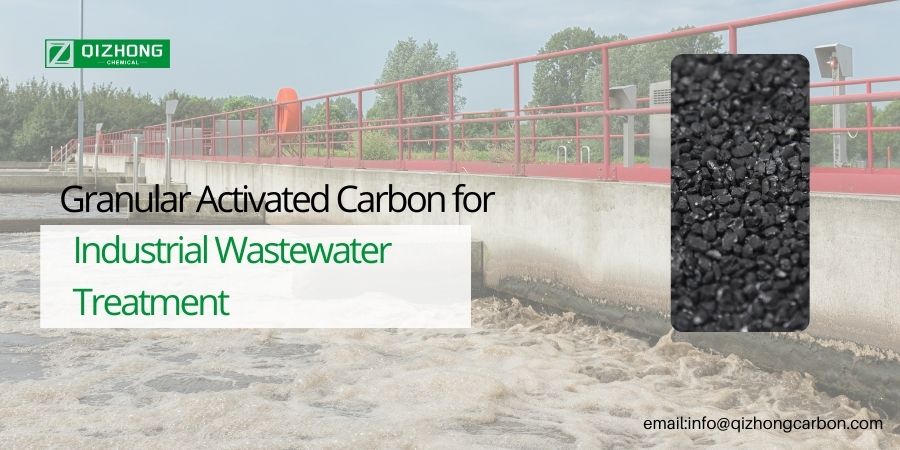
Industrieabwässer enthalten eine Vielzahl von Schadstoffen, die vor der Einleitung oder Wiederverwendung wirksam behandelt werden müssen. GAC spielt bei der Behandlung von Industrieabwässern eine entscheidende Rolle, indem sie biologisch abbaubare oder nicht abbaubare organische Schadstoffe adsorbiert.
Vorteile von GAC bei der Behandlung von Industrieabwässern:
- Reduziert wirksam den chemischen Sauerstoffbedarf (CSB) durch die Entfernung organischer Schadstoffe.
- Adsorbiert adsorbierbare organische Halogenide (AOX), BTEX (Benzol, Toluol, Ethylbenzol und Xylol) und phenolische Verbindungen.
- Entfernt Pestizide, Arzneimittelrückstände, endokrin wirksame Substanzen und andere Spuren von Verunreinigungen.
- Kontrolliert die Farbe und den Geruch des Abwassers.
Bei der Behandlung von Deponiesickerwasser eignet sich GAC hervorragend zur Entfernung von PFAS, toxischen Verbindungen und anderen schädlichen Schadstoffen.
Wasserwiederverwendung
Angesichts der zunehmenden Wasserknappheit ist die Wiederverwendung von Wasser in der Industrie und im kommunalen Bereich zu einer wichtigen Praxis geworden. Granulierte Aktivkohle kann sekundäre Abwässer so behandeln, dass sie nicht trinkbares oder sogar trinkbares Wasser darstellen.
Vorteile von GAC bei der Wasserwiederverwendung:
- Adsorbiert organische Spurenschadstoffe, die durch die biologische Behandlung nicht entfernt werden können.
- Verbessert die Transparenz des Wassers durch Verringerung von Farbe und Trübung.
- Verbessert die allgemeine Wasserqualität und gewährleistet eine sichere Wiederverwendung.
Prozesswasser und ultrareines Wasser
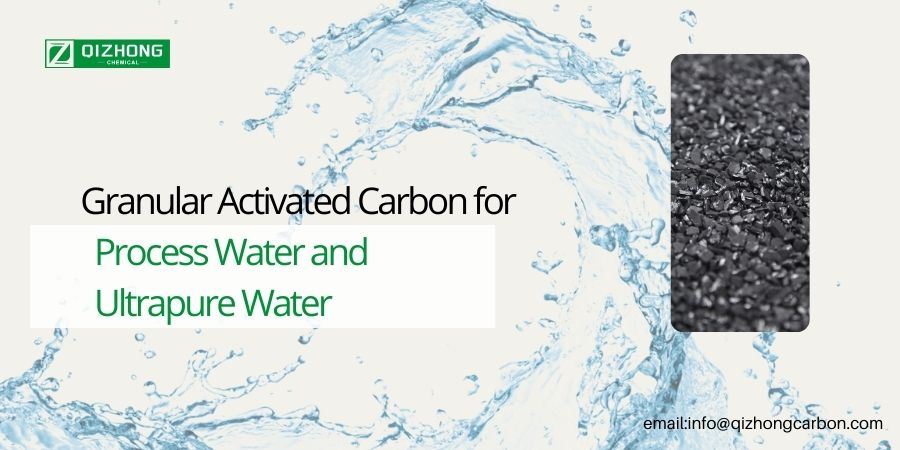
In der industriellen Produktion erfordern Prozess- und Reinstwasser extrem hohe Qualitätsstandards, um den Anforderungen der Elektronik-, Pharma-, Lebensmittel- und Getränkeindustrie sowie anderer High-Tech-Industrien gerecht zu werden. GAC spielt in diesen Bereichen eine Schlüsselrolle.
Anwendungen von GAC:
- Entfernt Chlor und Chloramine durch chemische Reduktion und schützt so die empfindlichen Membranfiltrationsanlagen.
- Adsorbiert organische Spurenstoffe und chemische Rückstände und sorgt so für ultrareines Wasser mit niedrigen organischen Schadstoffwerten.
- Kontrolliert geruchs- und farbverursachende Verunreinigungen, die die Produktqualität beeinträchtigen können.
- Verhindert bakterielles Wachstum in Prozesswassersystemen durch den Einsatz von silberimprägnierter GAC.
Aquarium-Filterung
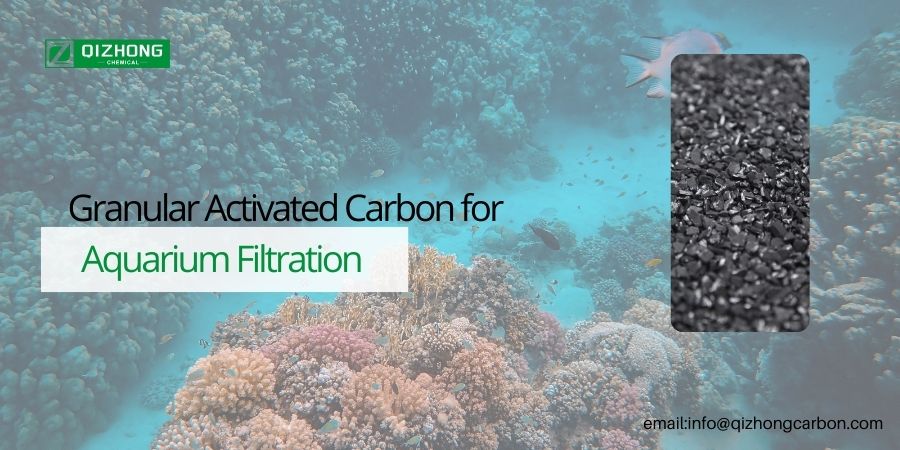
Die Kontrolle der Wasserqualität in Aquarien ist für die Gesundheit von Fischen und anderen Wasserlebewesen unerlässlich, und GAC spielt in Aquarienfiltersystemen eine wichtige Rolle.
Funktionen von GAC in der Aquarienfiltration:
- Chlor-Entfernung: Entfernt Restchlor aus dem Leitungswasser durch chemische Reduktion und verhindert so die Toxizität für Fische.
- Organische Adsorption: Entfernt organische Verunreinigungen wie Fischabfälle, Speisereste und Zersetzungsprodukte und hält das Wasser klar.
- Geruchsreduzierung: Adsorbiert organische Stoffe und andere Geruchsquellen und verbessert so das Aquarienmilieu.
- Entfernung von Medikamentenrückständen: Nach der Anwendung von Medikamenten in Aquarien adsorbiert GAC Medikamentenrückstände und verhindert so langfristige Auswirkungen auf die Fische.
Wie man die richtige körnige Aktivkohle auswählt
Die Auswahl der geeigneten GAC ist entscheidend für eine effiziente Wasseraufbereitung. Im Allgemeinen wird AKPF aus Kohle oder Kokosnussschalen hergestellt, die jeweils ihre eigenen Vorteile haben. Die Wahl sollte sich nach den spezifischen Anforderungen an die Wasseraufbereitung richten.
Granulierte Aktivkohle aus Kokosnussschalen
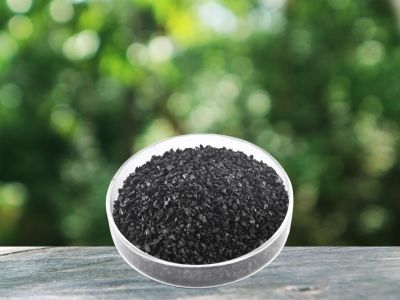
Granulierte Aktivkohle aus Kokosnussschalen für die Wasseraufbereitung
Hohe Adsorption, niedriger Aschegehalt, Abriebfestigkeit, Lebensmittelqualität, kundenspezifischer Service möglich.
Granulierte Aktivkohle aus Kokosnussschalen hat feinere Poren und eine größere Oberfläche und eignet sich daher besonders gut für die Adsorption von Schadstoffen mit niedrigem Molekulargewicht und von tief behandelten Schadstoffen. Diese Art von GAC wird häufig in den folgenden Szenarien verwendet:
- Entfernung von Desinfektionsnebenprodukten (z. B. THM) und natürlichen organischen Stoffen (NOM) aus dem Trinkwasser.
- Adsorption von Chloraminen, Gerüchen und Spurenschadstoffen in Aquarien und Schwimmbädern.
- Entfernung von organischen Spurenstoffen und Verbesserung des Wassergeschmacks bei der Wasserwiederverwendung und der Reinstwasseraufbereitung.
Granulierte Aktivkohle aus Kokosnussschalen ist hochrein und eignet sich hervorragend für Anwendungen, die eine hohe Wasserqualität erfordern, wie z. B. Trinkwasser und Prozesswasser.
Granulierte Aktivkohle auf Kohlebasis
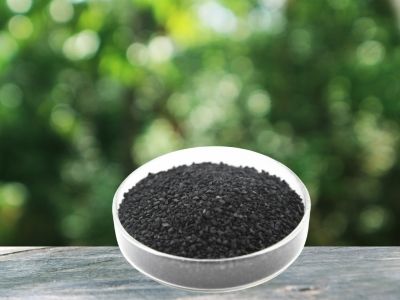
Granulierte Aktivkohle aus Kohle für die Wasseraufbereitung
Gute mechanische Festigkeit, hohe Verschleißfestigkeit, hohe Adsorption, Fabrikpreis, schnelle Lieferung.
Granulierte Aktivkohle auf Kohlebasis hat eine breitere Porengrößenverteilung und eignet sich daher für die Adsorption von hochmolekularen und hydrophoben organischen Schadstoffen. Diese Art von GAC eignet sich gut für die folgenden Szenarien:
- Entfernung von CSB und adsorbierbaren organischen Halogeniden (AOX) aus Industrieabwässern.
- Adsorbierung von PFAS und anderen persistenten Schadstoffen bei der Behandlung von Deponiesickerwasser.
- Entfernung von Farbe, Geruch und Chemikalienrückständen im Prozesswasser.
Aktivkohle aus Kohlegranulat wird aufgrund seiner hohen Adsorptionsfähigkeit und Kosteneffizienz häufig für die Behandlung von Industrieabwässern und Deponiesickerwasser eingesetzt.
Wenn Sie Fragen zur Wasseraufbereitung haben, wenden Sie sich bitte an unser Expertenteam, das Ihnen maßgeschneiderte Lösungen für Ihren Reinigungsbedarf anbieten wird.
Schlussfolgerung
Granulierte Aktivkohle ist ein unverzichtbares Hilfsmittel in der modernen Wasseraufbereitung, das in der Lage ist, verschiedene Verunreinigungen zu entfernen, um die Sicherheit und Qualität des Wassers zu gewährleisten.
QiZhong Chemical bietet qualitativ hochwertige granulierte Aktivkohle an, die speziell für verschiedene Wasseraufbereitungsanforderungen entwickelt wurde. Unsere Produkte zeichnen sich durch hohe Reinheit, starke Adsorptionskapazität und außergewöhnliche Leistung aus, um eine breite Palette von Anforderungen zu erfüllen. Wenn Sie auf der Suche nach zuverlässigen Lösungen für die Wasseraufbereitung sind, Kontaktieren Sie uns heute für eine fachkundige Beratung oder maßgeschneiderte Produktempfehlungen.
